We may not have the course you’re looking for. If you enquire or give us a call on +46 850282424 and speak to our training experts, we may still be able to help with your training requirements.
We ensure quality, budget-alignment, and timely delivery by our expert instructors.
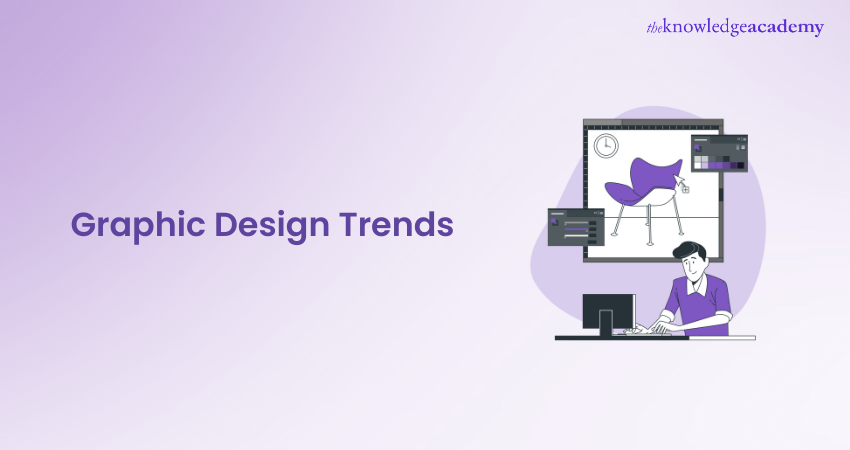
Graphic Design is a field where trends constantly evolve, pushing designers to explore new creative territories. According to IBIS World, the global Graphic Design market held a value of approximately £32 billion in 2021, and it has exhibited steady growth on an annual basis. Given this continuous growth, staying informed about the key trends within the industry is crucial for Graphic Designers. In this comprehensive blog, we'll explore the top 12 Graphic Design Trends that are making a significant impact in today’s creative world.
Table of Contents
1) What are Graphic Design Trends?
2) Top 12 Graphic Design Trends
a) Bold and vibrant colours
b) Minimalism and Simplification
c) 3D and Realism
d) Abstract and artistic illustrations
e) Typography redefined
f) Sustainability and eco-friendly design
g) Motion graphics and animation
h) Retro and vintage revival
i) Augmented Reality (AR) integration
j) Geometric shapes and patterns
k) Cultural diversity and inclusivity
l) Cyberpunk and futuristic aesthetics
m) Experimental fonts
n) A handmade touch
3) Conclusion
What are Graphic Design Trends?
Graphic Design Trends hold a vital role in the creative landscape. They keep your work relevant, engaging, and effective. By embracing current Graphic Design Trends, your designs resonate with modern aesthetics, capturing audience attention and engagement. Staying updated provides a competitive edge, showcasing your adaptability and modern perspective to clients.
These types of Graphic DesignTrends are rooted in psychology, helping you communicate messages effectively through shapes, colours, and styles. Moreover, they reflect cultural shifts, ensuring your work remains culturally sensitive and inclusive. Additionally, it optimises designs for various platforms, enhancing user experiences. Engaging with global design trends connects you to a vast community of creators, encouraging cross-cultural inspiration.
Top 14 Graphic Design Trends
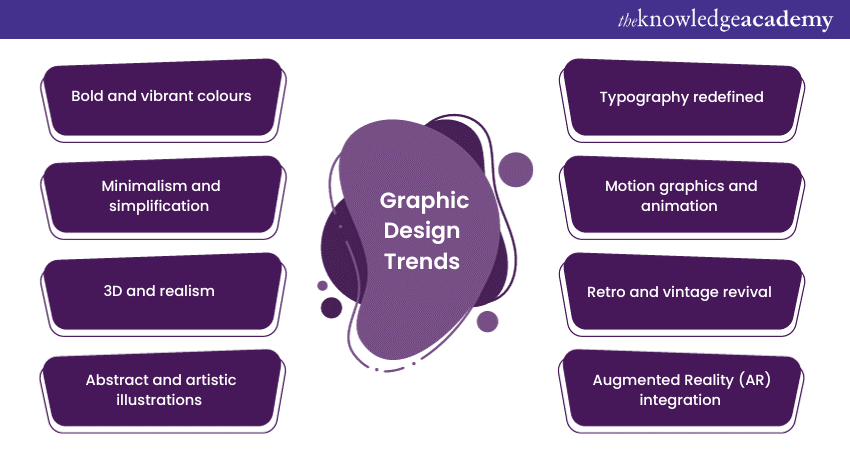
Every year, Graphic Design Trends reflect how art imitates life, reflecting our changing needs and perspectives. Whether you're a professional Graphic Designer or a curious enthusiast, understanding these top Graphic Design Trends can inspire your work and help you stay relevant in an evolving industry. Let’s get started.
1) Bold and vibrant colours
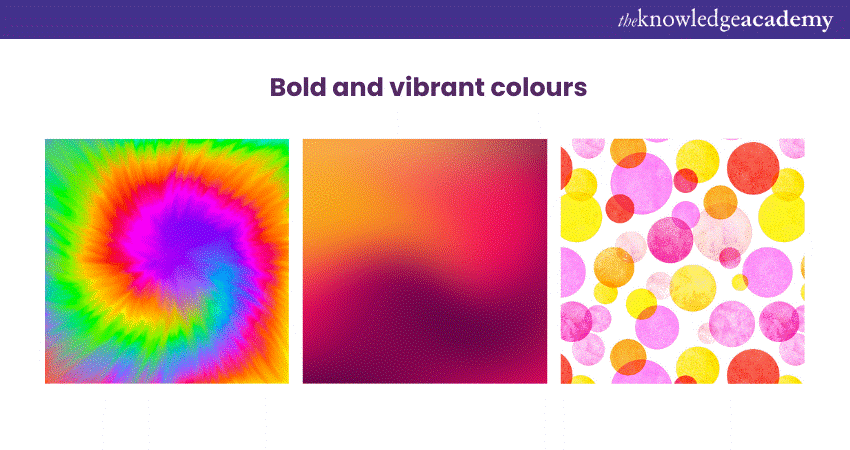
In the world of Graphic Design, colour is a language all its own, capable of conveying emotions and setting the tone of a design. This trend of using bold and vibrant colours is a response to the digital age's oversaturation of visuals. Designers are embracing this trend by opting for intense, attention-grabbing hues that demand engagement.
a) Colour contrasts and combinations: One facet of this trend is the strategic use of colour contrasts and combinations. Designers are exploring complementary and analogous colour schemes to create visual impact. Contrasting colours, such as pairing vibrant oranges with deep blues, develop a sense of energy and dynamism, drawing the viewer's eye. Such combinations add vibrancy and facilitate better visual hierarchy and communication.
b) Colour Psychology in design: Colour psychology plays a crucial role in this trend, as designers leverage the emotional associations that different colours evoke. Warm tones like reds and yellows instil a sense of excitement and warmth, while cool blues and greens convey calmness and reliability. By carefully selecting colours based on the intended message, designers can establish a stronger connection with their audience.
2) Minimalism and simplification
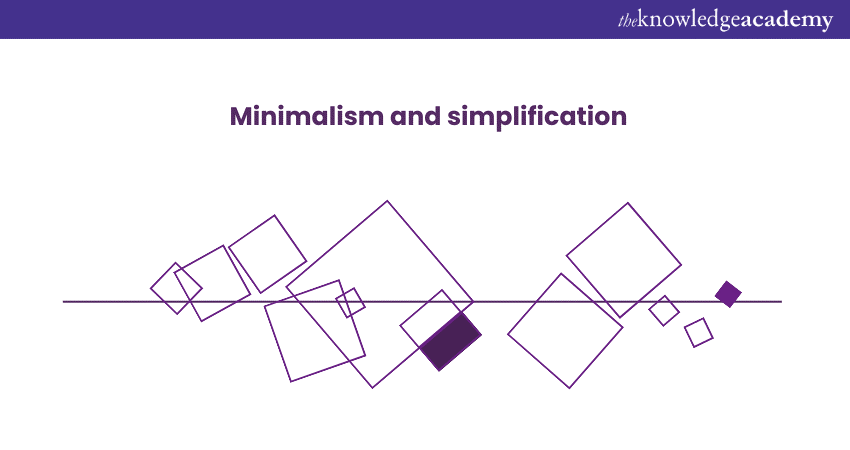
The concept of minimalism has been a guiding principle in design trends graphic for decades, but it's experiencing a resurgence in recent years. The minimalist Graphic Design revolves around the idea that less is more, emphasising clarity, simplicity, and purposeful use of elements.
a) Clean lines and whitespace: Minimalist designs often feature clean lines and generous whitespace. These elements contribute to a visually appealing layout and enhance the user's ability to focus on essential content. Whitespace serves as a visual breath, allowing the viewer's eyes to rest and absorb the information more effectively.
b) Subtle details with maximum impact: In minimalism, every element holds significance. Designers are incorporating subtle details that have a profound impact, whether it's a carefully chosen font, a strategically placed icon, or a subtle gradient. These details work harmoniously to communicate a message without overwhelming the viewer.
3) 3D Design and Realism
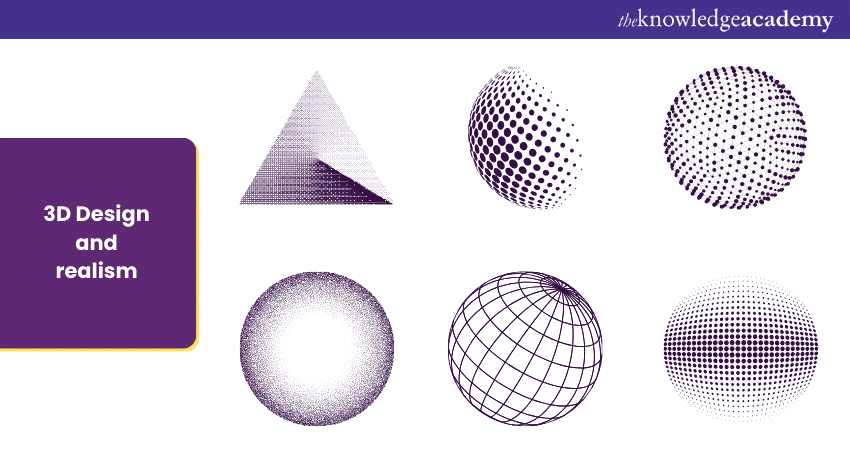
Advancements in technology have opened up new methods for Graphic Designers to explore. As per a report by Global Data, 3D printing technology continued to impact design, with the global 3D printing market size projected to reach over $40 billion by 2026. The integration of 3D elements adds depth and Realism to designs, creating an immersive experience that captivates the audience.
a) Visual depth and interaction: With 3D design, designers can manipulate perspective, lighting, and textures to create visuals that mimic the physical world. This trend extends beyond static images; interactive 3D elements engage users in a way that was previously impossible. Product renderings, architectural visualisations, and even virtual reality experiences are all made more compelling through 3D design.
b) Blurring reality and imagination: The trend of 3D design also blurs the line between reality and imagination. Surreal and dreamlike visuals can be created, allowing designers to transport viewers to fantastical worlds. This trend challenges the conventional boundaries of Graphic Design and encourages experimentation.
4) Abstract and artistic illustrations
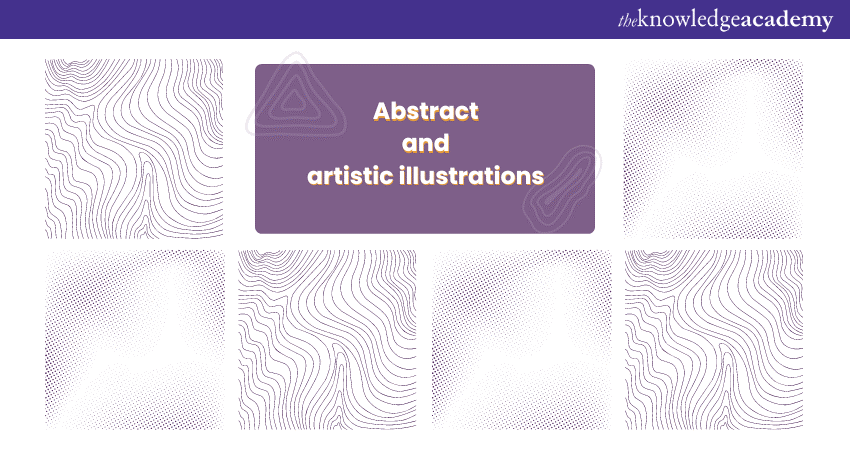
Gone are the days of predictable rectangles and circles; designers are now exploring asymmetry, flowing lines, and irregular contours. Graphic Design is increasingly embracing artistic freedom through abstract illustrations. This trend encourages designers to break away from literal representations and embrace creative interpretations that provoke thought and emotion.
a) Expression and interpretation: Abstract illustrations provide an opportunity for designers to express complex ideas and concepts in a visually intriguing manner. By using forms, colours, and shapes to convey emotions or themes, designers can create visuals that stimulate curiosity and encourage viewers to delve deeper into the message.
b) Diverse Styles and techniques: The beauty of abstract illustrations lies in their diversity. From fluid and organic forms to geometric and structured compositions, this trend accommodates various artistic styles and techniques. This diversity ensures that each design feels fresh and distinctive, standing out in a sea of visual content.
5) Typography redefined
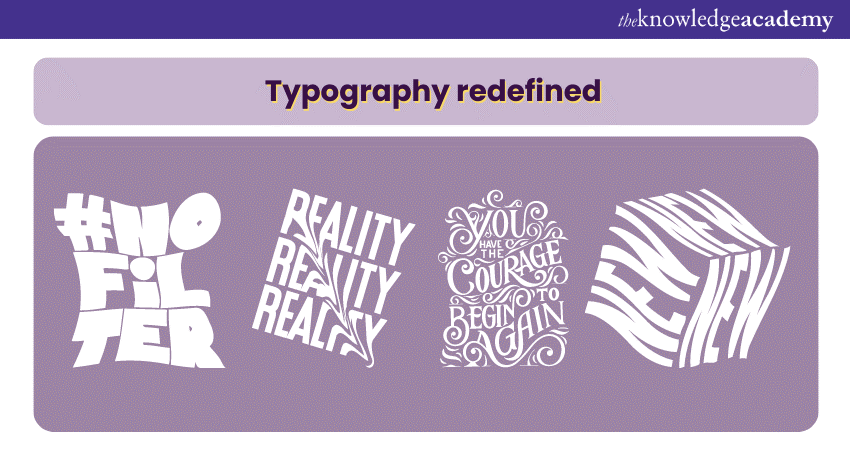
Typography is no longer confined to conveying information—it's evolving into a design element that can significantly influence the overall aesthetic and impact of a design.
a) Custom fonts and lettering: Designers are breaking away from standard typefaces and embracing custom fonts and lettering. These bespoke typography choices allow brands to infuse their identity into every aspect of their design. Hand-drawn letters, calligraphy-inspired scripts, and even digitally manipulated fonts are becoming integral parts of visual communication.
b) Typography as visual art: Typography is transitioning from a functional element to a form of visual art. Designers are using type as a design feature, integrating it with other elements such as images and illustrations. This creates a cohesive and harmonious visual language that resonates with viewers on multiple levels.
6) Sustainability and eco-friendly design
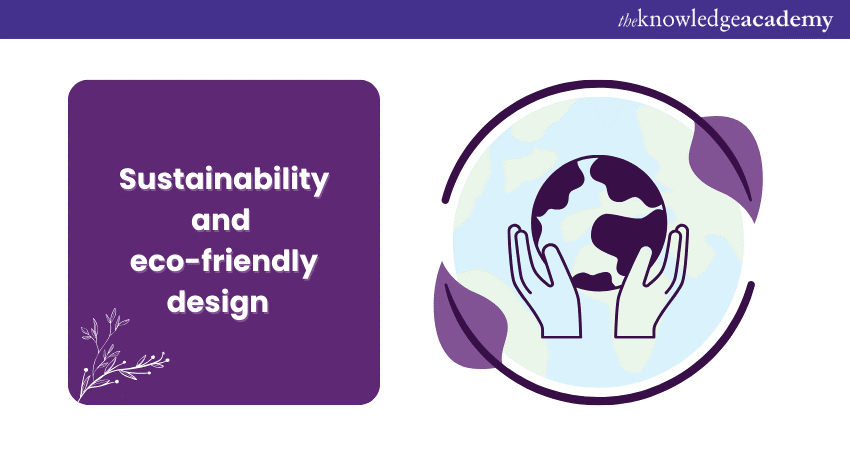
As environmental awareness grows, Graphic Design is playing a key role in promoting sustainability and eco-consciousness.
a) Nature-inspired designs: The trend of sustainability often incorporates nature-inspired visuals, using earthy colours, botanical motifs, and natural textures. These elements develop a connection with the environment and reflect a brand's commitment to ethical and sustainable practices.
b) Recyclable and organic elements: Designers are exploring materials and textures that mimic organic and recyclable substances. This trend highlights the importance of using design to convey messages of environmental responsibility and promote a circular economy.
7) Motion graphics and animation
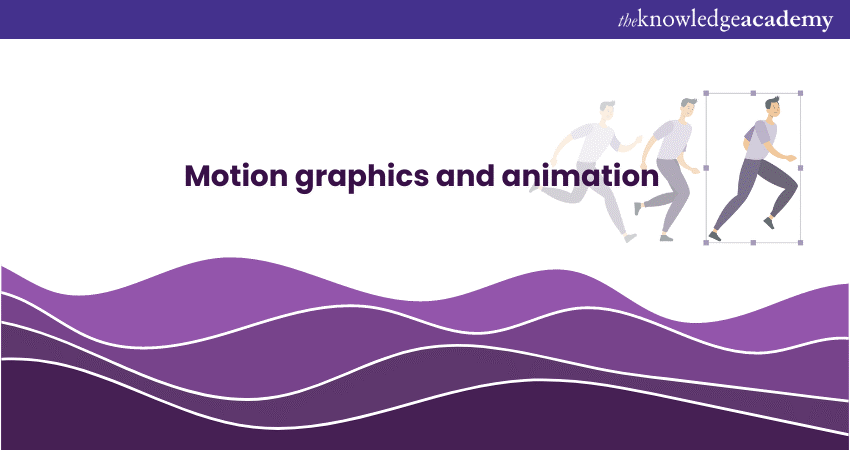
Static designs are transforming into dynamic experiences by integrating motion graphics and animation. These moving visuals add an element of interactivity and excitement to designs, making them ideal for social media, websites, and digital advertising.
a) Visual storytelling: Animation allows designers to tell stories in an engaging and immersive way. Brands can convey complex narratives or demonstrate product features through animated sequences, capturing the audience's attention and facilitating better comprehension.
b) Interactive experiences: Motion graphics are not limited to linear animations; interactive experiences are becoming increasingly prevalent. From micro-interactions to full-fledged animated websites, designers are leveraging animation to create interactive journeys that keep users engaged.
Advance your designing skills with our Motion Graphic Masterclass - Register now and unlock your creative potential!
8) Retro and vintage revival
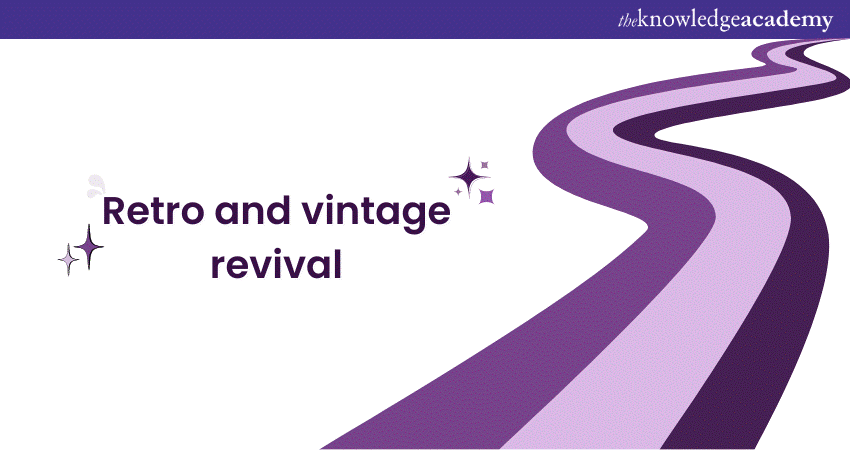
Nostalgia is a powerful emotion, and Graphic Designers are harnessing its appeal by embracing retro and vintage aesthetics.
a) Nostalgic element: Designers are revisiting design elements from bygone eras, such as typography styles from the mid-20th century or colour palettes from the 80s. These elements evoke feelings of nostalgia, resonating with audiences who appreciate the familiar and comforting.
b) Modern interpretations: The retro trend is not a carbon copy of the past; it's about reimagining and updating vintage aesthetics for the modern context. Designers are infusing classic elements with contemporary twists, creating designs that feel both timeless and relevant.
9) Augmented Reality (AR) integration
Graphic Design is stepping off the screen and into the real world through Augmented Reality (AR) integration. Designers are exploring AR to enhance user engagement and create memorable interactions.
a) Interactive print media: AR blurs the line between the digital and real world, enabling users to interact with designs instantly. Users can access additional content, animations, or interactive experiences by scanning printed materials with a smartphone or tablet. This trend breathes new life into traditional print media, enhancing user engagement.
b) Virtual try-ons and experiences: In industries like fashion and interior design, AR is being used to offer virtual try-ons and experiences. Customers can visualise products in their own environment before making a purchase, enhancing their confidence and reducing returns.
10) Geometric shapes and patterns
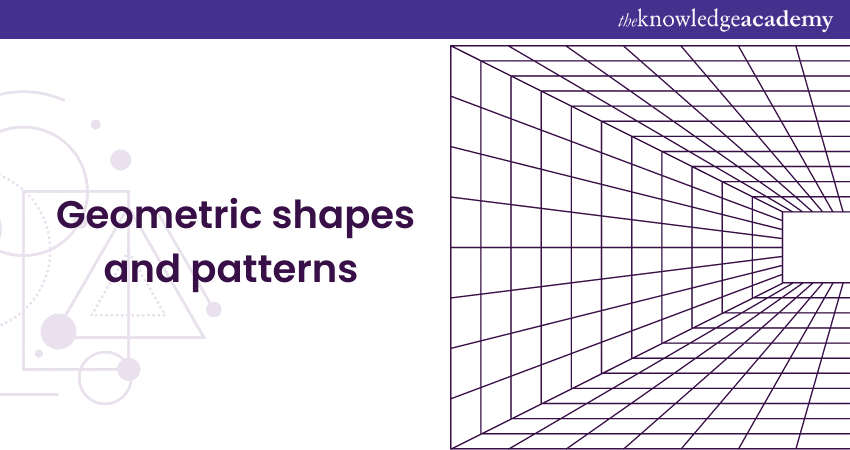
Geometry is taking centre stage in Graphic Design, with the rise of bold geometric shapes and complex patterns. These elements add structure and visual interest to designs, creating a sense of order while allowing for artistic exploration.
a) Symmetry and asymmetry: Geometric designs can embrace both symmetry and asymmetry, offering a versatile range of visual possibilities. Symmetry exudes balance and harmony, while asymmetry adds a touch of dynamic energy. Designers are playing with these principles to create captivating compositions.
b) Minimalistic geometrics: Geometric shapes are also finding their way into minimalist designs, merging two prominent trends. By using simple geometric forms, designers can communicate complex concepts with elegance and clarity, while maintaining a contemporary aesthetic.
11) Cultural diversity and inclusivity
Graphic Design is becoming a medium for celebrating diversity and inclusivity, reflecting the rich tapestry of cultures and identities in the world.
a) Cultural symbols and references: Designers are integrating culturally relevant symbols, patterns, and references into their work. This allows brands to connect with specific audiences on a deeper level while also promoting cross-cultural understanding and appreciation.
b) Representation matters: Inclusive design involves incorporating diverse representations of people from various backgrounds. This trend is moving away from stock imagery to custom illustrations that authentically depict a wide range of ethnicities, genders, ages, and abilities.
12) Cyberpunk and futuristic aesthetics
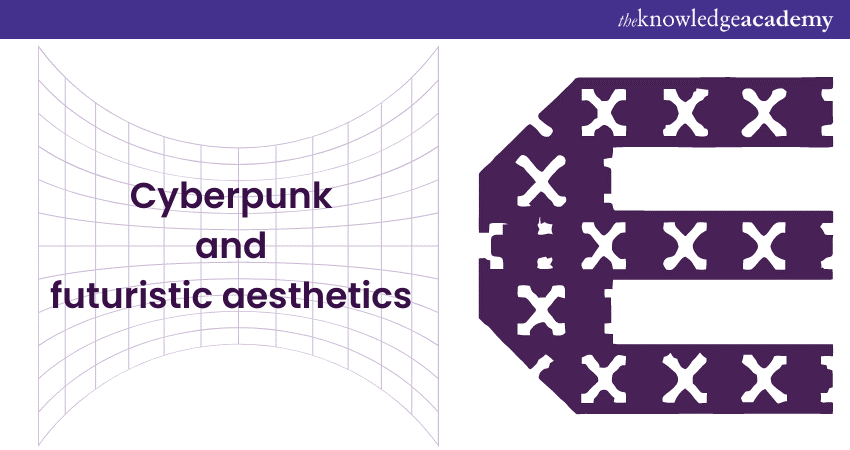
As technology advances, so does our fascination with the future. Cyberpunk and futuristic aesthetics are influencing Graphic Design, infusing visuals with a sense of innovation and otherworldly intrigue.
a) Digital landscapes: Designers are creating visuals that depict futuristic cityscapes, neon lights, and digital environments. This trend taps into the fascination with technology and the unknown, transporting viewers to realms yet to be explored.
b) Glitch art and digital distortions: The cyberpunk trend often embraces glitch art and digital distortions, reflecting the imperfections that can occur in a technology-driven world. These visual disruptions add an edgy and surreal dimension to designs.
13) Experimental fonts
Experimental fonts stand as a testament to innovation and creativity. These fonts transcend conventional typographic norms, offering designers a unique canvas to express ideas with groundbreaking visual elements.
a) Innovative typography: Experimental fonts push the boundaries of traditional typefaces, offering a fresh and creative approach to visual communication.
b) Expressive design: These fonts provide designers with unique tools to convey mood, tone, and individuality, allowing for more personalised and engaging content.
14) A handmade touch
The allure of a handmade touch brings a sense of artisanal craftsmanship to design. Whether it's the imperfections that tell a story or the personal connection forged between creator and audience, the handmade touch adds a layer of authenticity and emotion to the visual landscape.
a) Artisanal craftsmanship: Incorporating a handmade touch adds a sense of authenticity and craftsmanship to design, connecting the creator and the audience.
b) Emotional appeal: Handmade elements evoke a sense of warmth and personalisation, creating a more relatable and emotionally resonant experience for viewers.
Conclusion
All in all, the world of Graphic Design is a testament to the boundless creativity and innovation within the field. From bold colour choices to complex 3D designs, each trend discussed in the blog is shaping the way we interact with visual content. As a Graphic Designer, staying abreast of these Graphic Design Trends can provide you with the tools to create attractive visuals that resonate with your target audience and stand the test of time.
Unleash your imagination with our 2D Animation Training - Turn your creativity into captivating visuals!
Frequently Asked Questions
What are the Graphic Design Trends for 2024?

Explore cutting-edge Graphic Design Trends for 2024, from futuristic minimalism to bold colour contrasts. Embrace innovative techniques like 3D and Augmented Reality to stay ahead in visual communication. Evolve your designs with the latest aesthetic shifts for a modern and impactful visual presence.
Is Graphic Design still relevant?

Absolutely! Graphic Design remains crucial in 2024. It's the visual language of communication, enhancing brand identity and user experience. From digital platforms to print media, Graphic Design crafts compelling narratives. Its adaptability ensures it's relevant and indispensable in conveying messages effectively across diverse mediums.
What are the other resources and offers provided by The Knowledge Academy?

The Knowledge Academy takes global learning to new heights, offering over 3,000 online courses across 490+ locations in 190+ countries. This expansive reach ensures accessibility and convenience for learners worldwide.
Alongside our diverse Online Course Catalogue, encompassing 19 major categories, we go the extra mile by providing a plethora of free educational Online Resources like News updates, Blogs, videos, webinars, and interview questions. Tailoring learning experiences further, professionals can maximise value with customisable Course Bundles of TKA.
What is Knowledge Pass, and how does it work?

The Knowledge Academy’s Knowledge Pass, a prepaid voucher, adds another layer of flexibility, allowing course bookings over a 12-month period. Join us on a journey where education knows no bounds.
What are the related Virtual Online Job Roles courses and blogs provided by The Knowledge Academy?

The Knowledge Academy offers various Virtual Online Job Courses including Virtual Assistant Masterclass, Travel Agent Training etc. These courses cater to different skill levels, providing comprehensive insights into Graphic Designing.
Our Virtual Online Jobs blogs cover a range of topics related to Graphic Designing, offering valuable resources, best practices, and industry insights. Whether you are a beginner or looking to advance your Graphic Designing expertise, The Knowledge Academy's diverse courses and informative blogs have you covered.
Upcoming Business Skills Resources Batches & Dates
Date
 Virtual Assistant Course
Virtual Assistant Course
Fri 4th Apr 2025
Fri 6th Jun 2025
Fri 8th Aug 2025
Fri 3rd Oct 2025
Fri 5th Dec 2025






 Top Rated Course
Top Rated Course



 If you wish to make any changes to your course, please
If you wish to make any changes to your course, please


